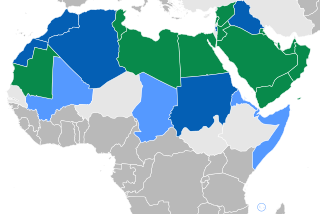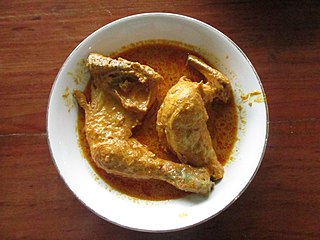Related Research Articles

Arabic is a Central Semitic language of the Afroasiatic language family spoken primarily in the Arab world. The ISO assigns language codes to 32 varieties of Arabic, including its standard form of Literary Arabic, known as Modern Standard Arabic, which is derived from Classical Arabic. This distinction exists primarily among Western linguists; Arabic speakers themselves generally do not distinguish between Modern Standard Arabic and Classical Arabic, but rather refer to both as al-ʿarabiyyatu l-fuṣḥā or simply al-fuṣḥā (اَلْفُصْحَىٰ).

French is a Romance language of the Indo-European family. Like all other Romance languages, it descended from the Vulgar Latin of the Roman Empire. French evolved from Gallo-Romance, the Latin spoken in Gaul, and more specifically in Northern Gaul. Its closest relatives are the other langues d'oïl—languages historically spoken in northern France and in southern Belgium, which French (Francien) largely supplanted. French was also influenced by native Celtic languages of Northern Roman Gaul like Gallia Belgica and by the (Germanic) Frankish language of the post-Roman Frankish invaders. Today, owing to the French colonial empire, there are numerous French-based creole languages, most notably Haitian Creole. A French-speaking person or nation may be referred to as Francophone in both English and French.

A folk dance is a dance that reflects the life of the people of a certain country or region. Not all ethnic dances are folk dances. For example, ritual dances or dances of ritual origin are not considered to be folk dances. Ritual dances are usually called "religious dances" because of their purpose.

The Sunda teal, also known as the Bebek cokelat or Itik benjut, is a dabbling duck found in open wetlands in Indonesia. The species formerly included the Andaman teal Anas albogularis and the grey teal, Anas gracilis as subspecies, but is currently considered monotypic.

Victoria, officially the Municipality of Victoria, is a municipality in the province of Laguna, Philippines. According to the 2020 census, it has a population of 43,408 people.

Levi Celerio was a Filipino composer and lyricist who is credited with writing over 4,000 songs. Celerio was recognized as a National Artist of the Philippines for Music and Literature in 1997.

English is a West Germanic language in the Indo-European language family, whose speakers, called Anglophones, originated in early medieval England on the island of Great Britain. The namesake of the language is the Angles, one of the ancient Germanic peoples that migrated to Britain. It is the most spoken language in the world, primarily due to the global influences of the former British Empire and the United States. English is the third-most spoken native language, after Mandarin Chinese and Spanish; it is also the most widely learned second language in the world, with more second-language speakers than native speakers.

Ytyk-Kyuyol is a rural locality and the administrative center of Tattinsky District of the Sakha Republic, Russia, located on the left bank of the Tatta River, 255 kilometers (158 mi) from Yakutsk, the capital of the republic. As of the 2010 Census, its population was 6,828.

Kapampangan cuisine differed noticeably from other groups in the Philippines. The Kapampangan kitchen is the biggest and most widely used room in the traditional Kapampangan household. When the Philippines was under Spanish rule, Spanish friars and sailors taught Kapampangans the basics of Spanish cooking. The Kapampangans were able to produce a unique blend that surprised the Spanish palate. Soon, Spanish friars and government officials were entertaining foreign guests at the expense of Kapampangan households. In the late 18th century, the Arnedo clan of Apalit were commissioned by the colonial government to entertain foreign dignitaries, including a Cambodian prince and a Russian archduke. Kapampangans were given the task of creating the meals and menus that were served in the proclamation of the First Philippine Republic in Malolos, Bulacan.
The Philippines is home to several folk dances such as Tinikling, Pandanggo, Cariñosa, and Subli. Dance has integrated itself in Philippine society over the course of many years and is imbedded in Philippine culture.
CarCanMadCarLan is a settlement area in the province of Surigao del Sur, Philippines, and is about the northernmost quarter of the province.
Itik-itik is a mimetic folk dance in the Philippines that mimics the movement of ducks. It originated in Cantilan, Surigao del Sur in the Philippines. Itik-itik was discovered in this town by National Artist for Dance Francisca Reyes-Aquino. Originating from a dance called Sibay and performed to the tune of Dejado, the story was told that an expert young dancer named Kanang at a barrio in Cantilan during a baptismal party had become so carried away with the rhythm that she began to improvise short, choppy steps similar to ducks and then, splash water on their backs. The dance immediately became popular in the province for stage performances and social dancing. Later, Mr. Antonino Arreza, a native of Cantilan and a grandfather of Prospero Pichay, Jr., was believed to be the one who composed the lyrics of Itik-itik. Below is the original version of Itik-itik in native Cantilangnon dialect:
Numerous events and festivals are held annually in Metro Manila. They include:
The Alabio duck is an Indonesian breed of domestic duck from North Hulu Sungai Regency.

Nasi kapau is a Minangkabau steamed rice topped with various choices of dishes originated from Nagari Kapau, Bukittinggi, a tourism and culinary hotspot town in West Sumatra, Indonesia. It is often describes as Minang version of nasi ramas or nasi campur.

Nasi padang, sometimes referred to as Padang rice, is a Minangkabau dish of steamed rice served with various choices of pre-cooked dishes originating from West Sumatra, Indonesia. It is named after the city of Padang, capital of the West Sumatra province. A miniature banquet of meats, fish, vegetables, and spicy sambals eaten with plain white rice, it is Sumatra's most famous export and the Minangkabau people's primary contribution to Indonesian cuisine.

Terengganu Malays, are a sub-group of Malays native to the state of Terengganu, on the east coast of Peninsular Malaysia. Besides Terengganu, they can also be found in the neighbouring states of Pahang and Johor. The descendants of Terengganu Malays can also be found in the Anambas Islands in Indonesia. As of 2010, it is estimated that the population of Terengganuan Malays is around 1.1 million people, and they form 94% of Terengganu's population, making them the dominant ethnic group in the state.

Gulai is a Minangkabau class of spicy and rich stew commonly found in Indonesia, Malaysia and Singapore. The main ingredients of this dish are usually poultry, goat meat, beef, mutton, various kinds of offal, fish and seafood, as well as vegetables such as cassava leaves, unripe jackfruit and banana stem.
Lirio is a short story by Peter Solis Nery, written originally in the Hiligaynon language of the Philippines, and in the magical realism style. It won first prize in the Hiligaynon Short Story category of the 1998 Palanca Awards for Literature The story is also widely used in the teaching of regional literature of the Philippines.
References
- 1 2 Itik at Ethnologue (25th ed., 2022)
